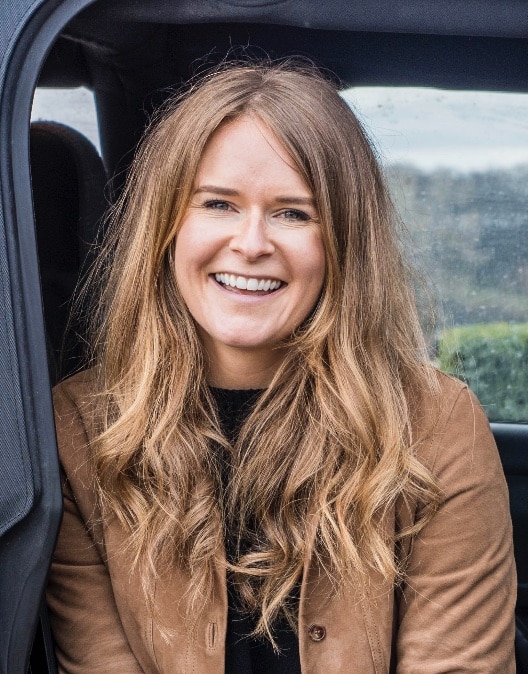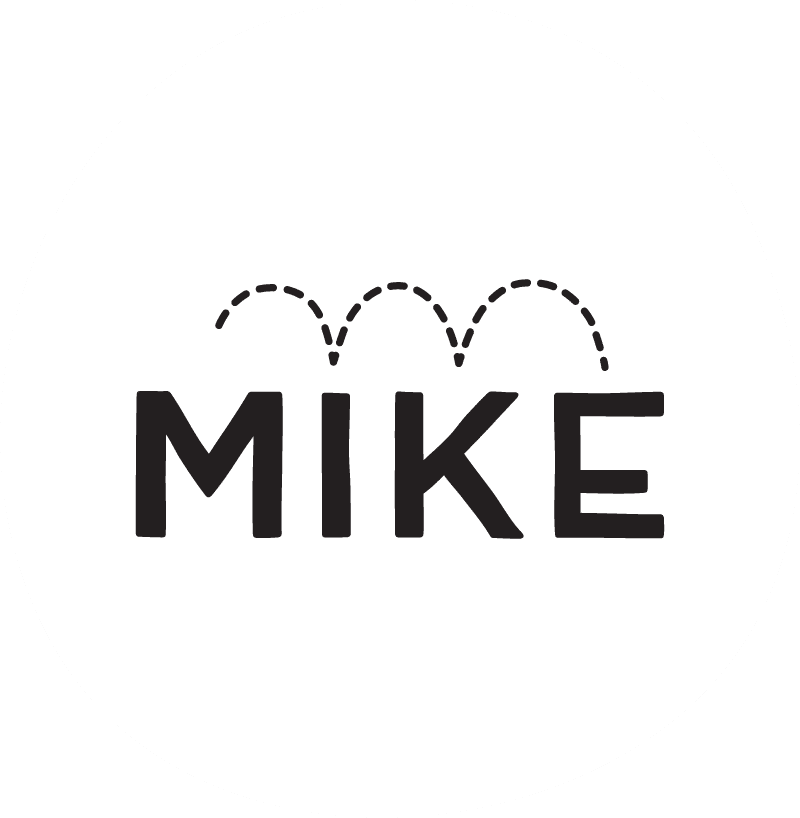As Executive Creative Director at innocent Drinks, Carol Feeley holds what is arguably one of the UK’s most fun jobs. We were lucky enough to chat with Carol to learn about her personal career journey and how she empowers her creative team at Fruit Towers.

Carol, can you tell us a bit about your journey and how you got into this line of work?
From a young age I knew that I was absolutely average at everything apart from graphic design. That was the one thing that I really enjoyed. When people would say, “I don’t know what I want to do with my life.” I would think, “Well, I’m good at only one thing.” So I was clear on my goals from the beginning.
One of my first jobs was photoshopping the stretch marks off wrestlers for a pack of Top Trumps. Whilst it wasn’t the most glamorous start to my career, I thought to myself, “I’m going to do the best job at this I can. I’m going to do the best photoshopping ever.” I knew that there were Top Trumps for loads of different brands, so I thought, “Do you know what? If I do a good job on this one, I might get to work on something a bit more interesting.”
And it worked. I was at that agency for 10 years and got to work with some amazing clients, including Disney, MTV, The Royal Ballet and the Discovery Channel. I was always looking for ways to get that experience; I’d do anything and everything. I was just relentless with trying to progress.
I’m a bit of a self-starter and a self-motivator. So, if people give me the freedom to shape things myself, people will get the best out of me. I get that freedom at my current role at innocent Drinks, which I absolutely love.
"One of my first jobs was photoshopping the stretch marks off wrestlers for a pack of Top Trumps."
Can you tell us what you love about innocent, and share an example of a fun project you’ve been a part of recently?
I love it when we get to do work that is unexpected. That’s what makes us stand out as a brand and that’s the stuff that the creative team love doing; getting those smaller unexpected touches in there.
We recently won the Global Contagious Look Ahead competition for our London Underground campaign. It’s one of my favourite projects, and to even be shortlisted was a massive win for us because we were the only in-house team who was. I think it’s a really good example of innocent’s tone of voice, and tackling what could be deemed as a bit of a boring subject around soil health, in a playful and intelligent way that connects with people.
"My job is to create the best environment for the team to make great, disruptive work that gets noticed."
What does creativity mean to you?
For me, creativity is about pushing boundaries, doing things differently, being fearless and turning the dial up to 11. My job is to create the best environment for the team to make great, disruptive work that gets noticed. That is essentially what I’m here to do. It’s so hard to get noticed these days because everyone’s a bit more risk averse post COVID; it can lead to quite deflated creative teams as the best creative work often requires a bit of bravery.
Creativity means always trying to find the energy, and reminding yourself that you’re the one that’s here to push it, change that dial, make sure that you are pushing to 11, and doing it time and time again.
How would you define good taste?
I think it’s completely subjective, and there’s a difference between good taste and good design. Good design should be solving a problem. Good taste is so subjective. Liquid Death is a great example of a company with ads that are in “bad taste”; they’re outrageous and hilarious and in turn, they get noticed.
What makes a good idea a great idea?
It starts with a great brief, and it’s really hard to write a great brief. It’s really hard to pinpoint the key insight and to keep it simple. A great brief exists in the simplest form it could possibly be, presenting a really clear problem to solve. That’s what creative people want. That’s where you get the really great work.
In the past couple of years, we’ve brought a creative strategist into my team, which is quite rare for an in-house team. She’s been amazing acting as the translator between the marketing brief and the creatives. She helps make the brief simpler and gives the creative team the perfect inspiration to help them create great work. She’s also fantastic at keeping us all on brief when we get excited about an idea (when I say ‘we’ I mainly mean ‘me’).
How do you support your team to interrogate and evolve a great idea?
You start with setting a clear vision. I always make sure that we’ve got a clear plan for the team from the very start of the year. I’m very clear with my expectations. We have quarterly check-ins where we look at everything the team has produced, and we talk about it really honestly.
We’ve got an approach we use for creative review sessions where we give people different roles in evaluating the work. It’s nothing new; it’s based on a book called Six Thinking Hats by Edward de Bono.
Our products are fruit and vegetable-based, so I facilitate this by tossing fruits and vegetables around the room. If you have the Optimistic Orange you can only say positive things and build on the idea. If you have the Feeling Fennel you focus on how the drinkers (our name for our customers) would feel when they view our work.
"We're a very close-knit team. That can sometimes make it difficult to be negative about other people's work, because we want to be nice."
Sometimes, as creatives, we can be a little bit blinkered in our thinking. It happens with all creatives, but particularly when you’re in-house. These exercises help give us a fresh perspective, forcing us to think about what the drinkers are going to feel or think. We work in a safe space, but it’s good to nudge people a little bit out of their comfort zone. That’s usually when we get some really interesting and funny conversations.
We spend loads of time with each other. We’re a very close-knit team. That can sometimes make it difficult to be negative about other people’s work, because we want to be nice. But, if you give everyone permission to actually tear the work apart, they’ll do it. It’s also an inclusive way of getting people who are a bit more shy or introverted to contribute. If you give them a role, you can bring them out of their shell.
How do you empower creatives to do their best work?
I think it’s about setting clear expectations, giving creative people a tight enough brief, and then giving them the freedom to work on it how they want to.
This morning I shared a brief with the designers, and they said “Oh, do you want us to work on this together? How do you want us to work on it?” So I said “You tell me. I don’t mind. You’ve got a travel budget. Part of this job is to research Europe, so get yourself to Paris, because you’re going to need to know what they’re doing there. So you tell me what you need, come back in, probably in about four weeks, and show me what you’ve come up with.”
I’m open-minded about how they work, we all understand the value of spending time with each other but that can be in the office or outside the office. I trust them. I trust everyone in my team. We’ve got a really challenging hiring process, so we know that we’ve got the right people coming through the door and they’re all super passionate. They love the brand. They really want to do a great job with the brand.
"We have a day planned that is focused on being bored. We’ll turn the chairs around to face the walls and just leave people there, see what happens."
What are some of the ways that you help unleash creativity within your team?
We have monthly inspiration days, during which you can go off and do whatever you want as long as it’s related to a project or your role. I’ve had people go to an underground magic show because they wanted to dial up their unexpected thinking. My strategist went to a library, which I thought was a really funny inspiration day for a strategist.
Soon we have a day planned that is focused on being bored. We’re going to put the whole team in an empty room with pens and paper. We’ll serve really boring snacks like dry crackers. We’ve booked this awful meeting room. It’s horrible. Just super, super bland. And everyone’s just got to sit there. We’ll turn the chairs around to face the walls and just leave people there, see what happens.
There are some really interesting insights into what happens when you get bored and how it activates a different part of your brain, sparking creative thinking. These days, nobody is ever bored because they’re on their phones all the time, watching TV, whatever. So we’re excited to see what comes out of this.
I love encouraging the team to do things differently. Recently, I was asked how I’d measure the success of us being bored for half a day. It reminded me of the quote by William Bruce Cameron, ‘“Not everything that counts can be counted, and not everything that can be counted counts.” Sometimes we can get weighed down by testing, data and research, and I think it’s important that we try different ways to spark creativity. Whilst I value data and research, some things can’t be measured and we should be fine with that. It’s an experiment.
"The last thing I want is a team full of people who've worked on smoothies and juice brands. I want people from all over the place."
How important is diversity to creativity?
Very important. Diversity is something that the industry really struggles with, and for lots of different reasons. There’s still a hell of a way to go to make sure that we’re being inclusive with people from all different types of backgrounds.
The last thing I want is people who’ve worked on smoothies and juice brands in my team. I want people from all over the place. I want people from different backgrounds, with different life experiences. I see so many job adverts posted for beauty brands where they only want people with beauty experience. I think that partly explains why the majority of beauty brands have the same visual cues – they aren’t bringing different backgrounds into the industry, they’re sticking with what feels safe.
When I applied for innocent, I had transferable skills, I understood how to build toolkits or do brand guidelines, how to do campaigns. But I had a completely different view; an entertainment view of how things should work. I truly believe that, when you get lots of different people together, that’s where you get the magic.
